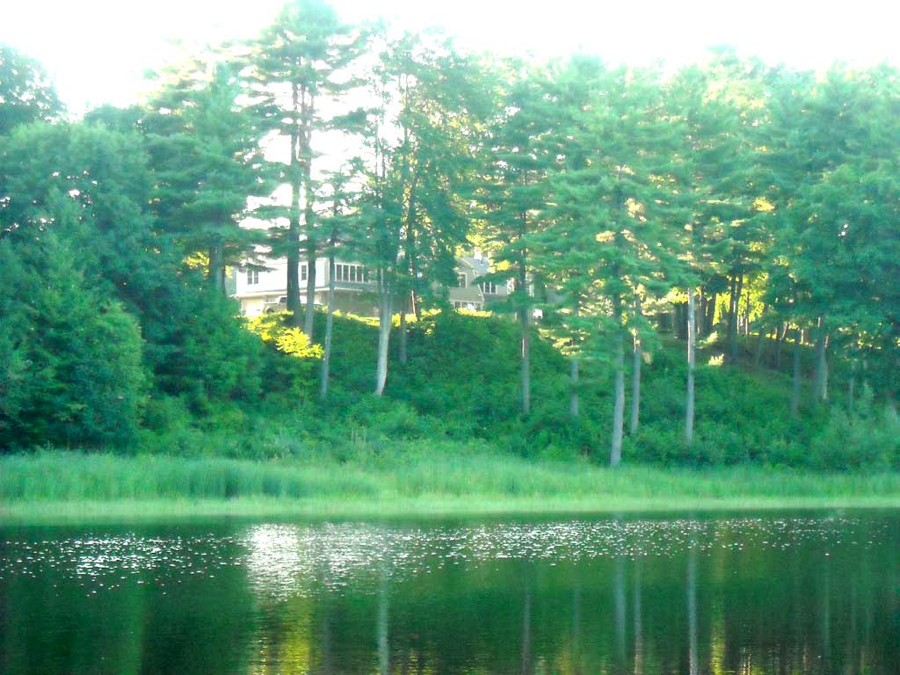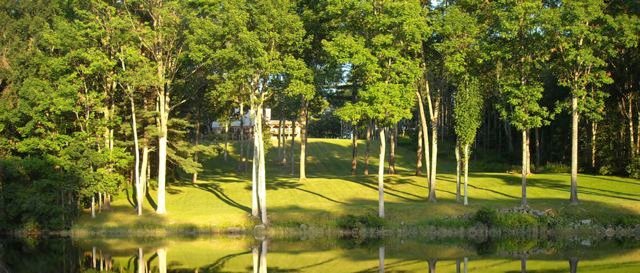Vegetative Buffers along Shorelines Protect Water Quality
Vegetation and soils are very effective at trapping and removing pollution from run-off before it reaches streams, rivers and harbors. The better the barrier between any source of coliform bacteria and the shellfish growing area, the safer the shellfish.
 Thick vegetation or buffer strips along waterways slow runoff and naturally filter nonpoint source pollutants. Trees, shrubs, and ground cover will absorb up to 14 times more rainwater than a grass lawn.
Thick vegetation or buffer strips along waterways slow runoff and naturally filter nonpoint source pollutants. Trees, shrubs, and ground cover will absorb up to 14 times more rainwater than a grass lawn.

A shoreline with a lawn or significant clearing allows far more pollutants to reach surface waters and lead to clam flat closures.
Agricultural activities that cause nonpoint source pollution include poorly located or managed animal feeding operations; overgrazing; plowing too often or at the wrong time; and improper, excessive or poorly timed application of pesticides, irrigation water and fertilizer.
Roads transport runoff, and accumulating pollution, to our shorelines.
.jpg)
Shoreland zoning regulations ensure that:
- Vegetation buffers between shorelines and development are encouraged and maintained;
- While no one set of management practices can effectively address pollution concerns at all farm operations because sites and conditions vary, the practices that are almost always effective are applied to all new and expanded agricultural activities; and,
- New and expanded roads are properly designed to shed water into vegetation buffers, where pollutants can be filtered out before reaching clam flats.
What can municipal officials do?
- Keep the shoreland zoning regulations up to date
- Support the code enforcement officer in administering and enforcing regulations
- Guide citizens through shoreland zoning regulations to prevent unintentional violations
- Encourage existing farm operations to apply best management practices
- Encourage road maintenance and other best management practices
 Menu
Menu